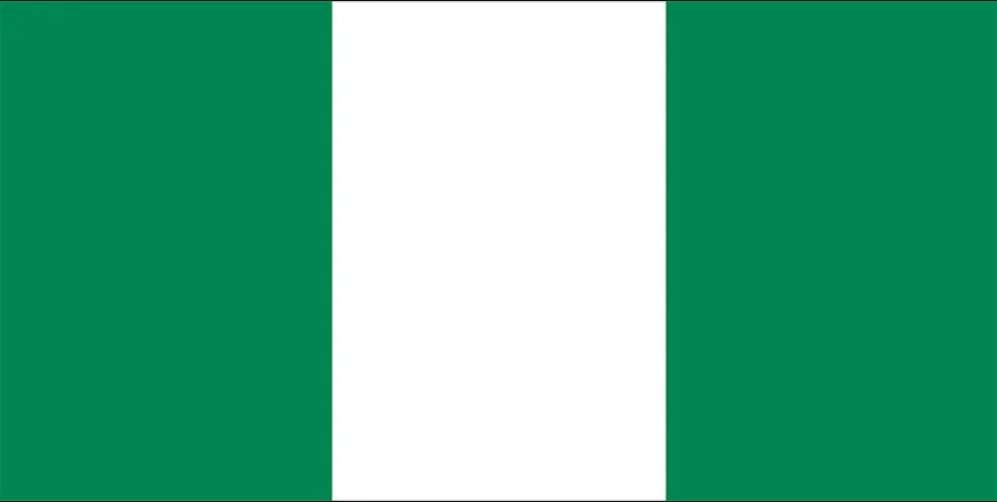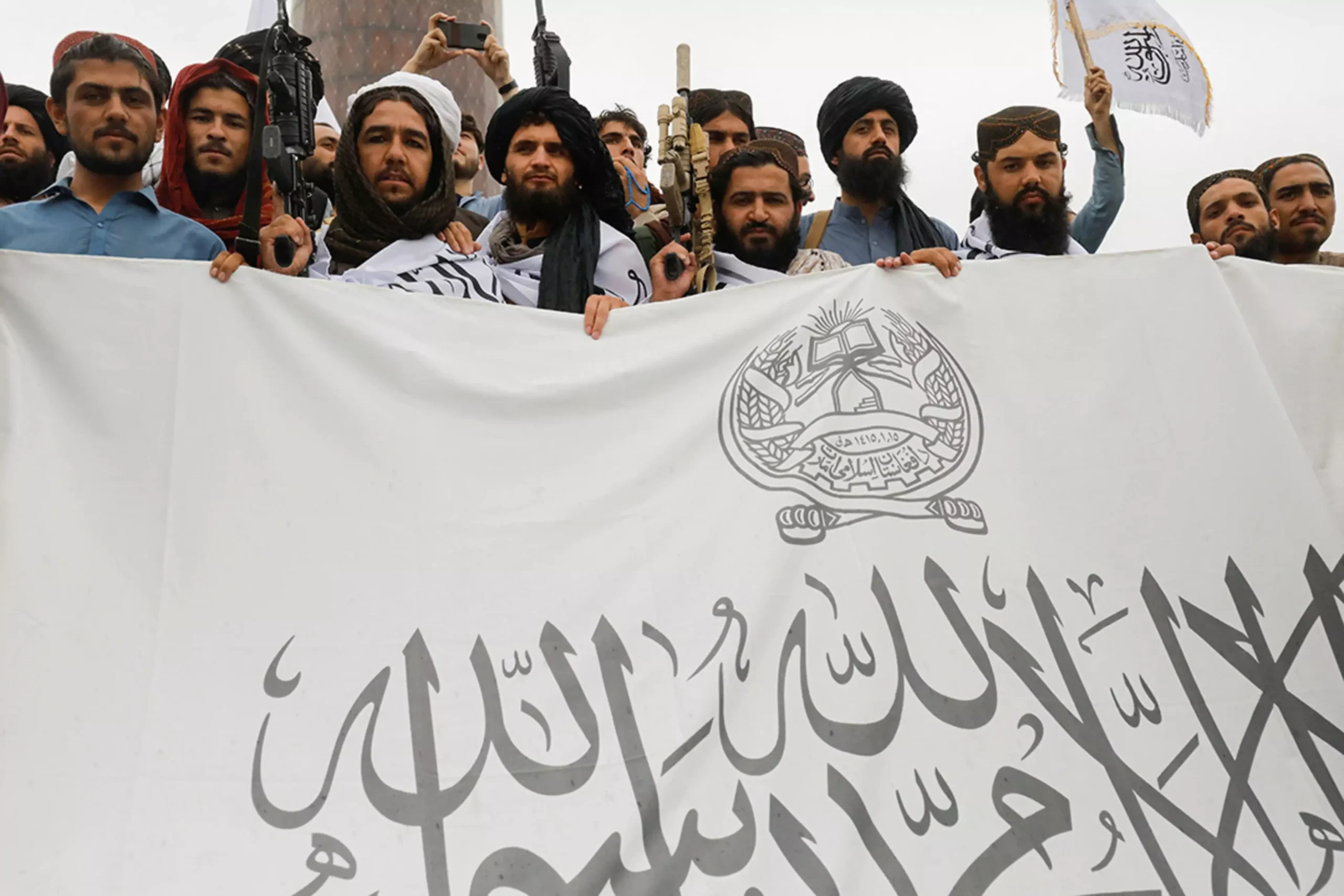The British agreed to trade in slaves under native terms beginning in the late 17th century and eventually acquired territory over several of them. Since there were so many different ethnic and religious groupings in these territories, there were no national flags representing them. The administration selected an insignia to feature on several colonial flags when the Colony and Protectorate of Nigeria was recognized in 1914. They discovered a green six-pointed star on a crimson disc and identified it as the Seal of Solomon.
In 1958, a competition to choose a national flag was called after the founding of a national planning committee as a result of work toward freedom. Many of the thousands of designs submitted were really challenging. Three vertical bars of green, white, and green make up the flag. The white denotes peace and unity, the two green stripes stand for the abundance of nature. The committee chose to eliminate the red quarter sun that was part of the original design and represented divine protection and leadership on the white ribbon. The Federal Republic of Nigeria’s flag was created in 1959 and was formally raised for the first time on October 1, 1960, or 62 years ago. Nigeria, like many other ethnically diverse nations, picked a simple flag design, which is characteristic. Some ethnic and religious groups may have been visibly acknowledged by a more complex design while ignoring others.
History of Nigeria Flag

The Nigerian flag was originally submitted with a red burning sun insignia in the middle of a white vertical stripe and a green band perpendicular to it on either side. The flag remained unmodified since the judges removed the insignia. On October 1, 1960, the day Nigeria gained independence from the United Kingdom, it was first formally used.
A national planning committee was created as a result of efforts to achieve independence, and it requested a competition to choose a national flag in 1958. Nearly 3,000 designs, many of them extremely intricate, were submitted. The flag is a variation of Michael Taiwo Akinkunmi’s fascinating submission from a contest that was held in 1959. The flag was created by a student who is 23 years old. When he spotted the newspaper advertisement for the design of the new national flag of Nigeria, he was a student at Norwich Technical College in London, England.
Taiwo’s triband design has a white vertical band in the middle and green vertical bands on either side. The flag’s white vertical centre featured a crimson sun that was emanating from it. He won the competition, but the judges took away the crimson sun from the national flag’s design, leaving only a green and white triband. Nigeria typically choose for simpler and less intricate flag designs to avoid unintentionally upsetting certain ethnic or religious groups.
Design
The Nigerian flag is a simple design, yet it has a lot of significance. Three stripes, each the same size as the next, are seen on the flag. While the central stripe is white, the left and right stripes are green. The white stripe was intended to represent peace, while the green stripes were intended to represent the nation’s natural resources.
Nigeria: Ensigns and State Flags
Nigeria has special ensigns for civil and naval vessels. Some of its states also have flags.
Three distinct ensigns—blue, red, and white—as well as their designated bearers are designated for use in Nigeria by the “Flags of Nigerian Ships” (1968) statute (Act No. 29, which was issued on May 14, 1968). The Nigerian flag is displayed in the canton of a blue field on the blue ensign. Government non-military ships fly this ensign.
Nigeria has only one national flag and ensign for all purposes.
Civil (Red) ensign
A civil ensign is a marine flag flown by civilian vessels to identify their country of origin. It may be the same as the state ensign and the naval ensign or it may be distinct (or war ensign). It is also referred to as the merchant flag or the merchant ensign. Yacht ensigns are special civil ensigns that certain nations use on yachts and even for yacht clubs.

Željko Heimer in 1996 stated that Nigeria’s civil ensign features a crimson field with the country’s flag in the canton. Whitney Smith (1975) states that the Nigerian national flag is flown by both civil and commercial vessels in Flags Through the Ages and Across the World.
State (Blue) ensign
A state ensign is a national flag that is specially designated and prohibited by law or custom (theoretically or really) to be used by a nation’s government or its agencies. It may also be an entirely distinct design. They are sometimes referred to as government flags as a result.
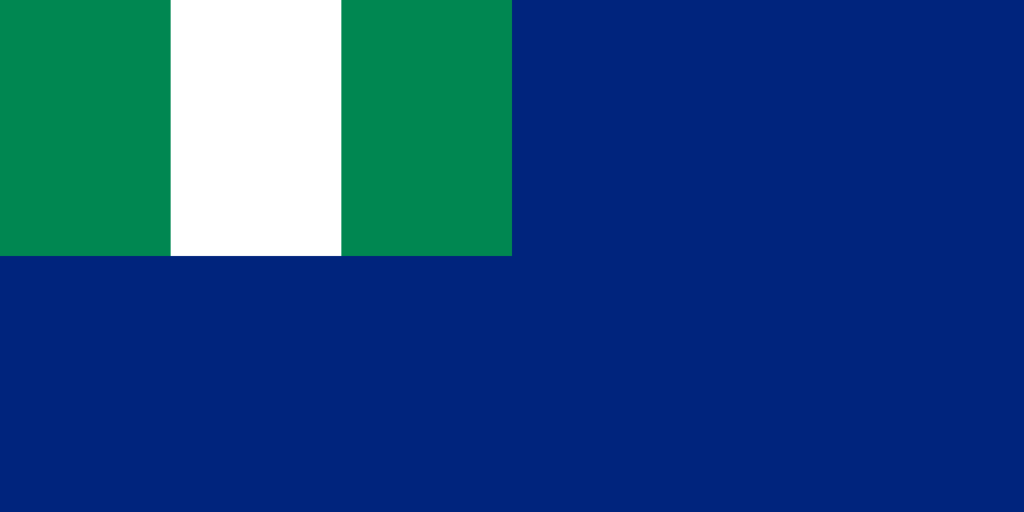
Jan Zrzavy reports that Flaggkarta (Lantmäteriet – Kartförlaget, 1995) shows the state ensign as having a blue field with the Nigerian national flag in the canton.
Naval ensign
A naval ensign is a maritime flag that navy ships from different nations use to identify their country. It could be the same as or distinct from a nation’s or state’s civil ensign.
A war ensign is another name for it. A battle ensign is a sizable rendition of a naval ensign flown on a warship’s mast just before engaging in combat. A jack, which is flown from a jackstaff at the bow of a vessel, is not the same as an ensign.
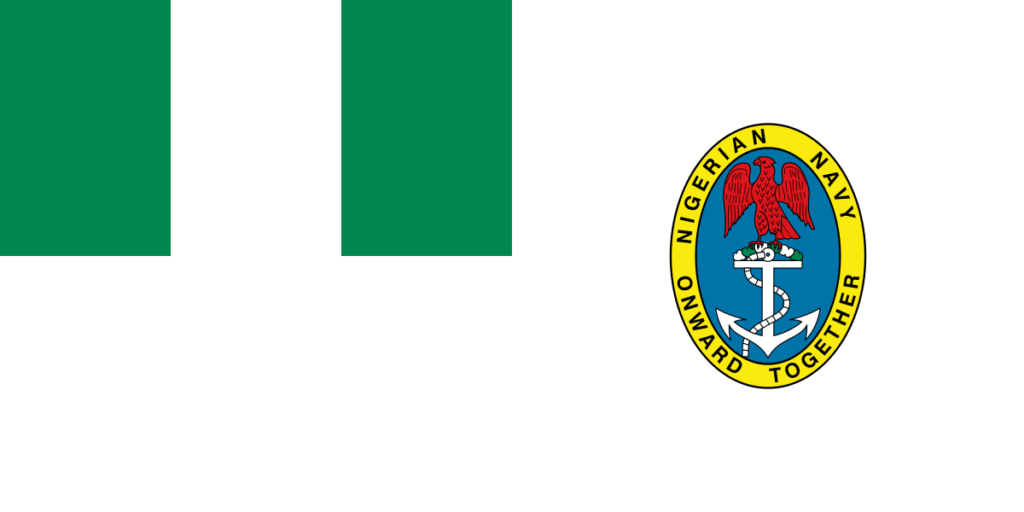
Nigeria Naval ensign is a white field with the national flag in the canton, with the Naval seal in the fly.
Air force ensign
A national air force’s flag is known as an air force ensign. A variety of distinctive flags and ensigns were adopted with the development of independent air forces in the first half of the 20th century. Such flags frequently include a roundel in the national colors.
Nigeria Airforce ensign is a sky-blue field with the national flag in the canton, with the air force
roundel in the fly.
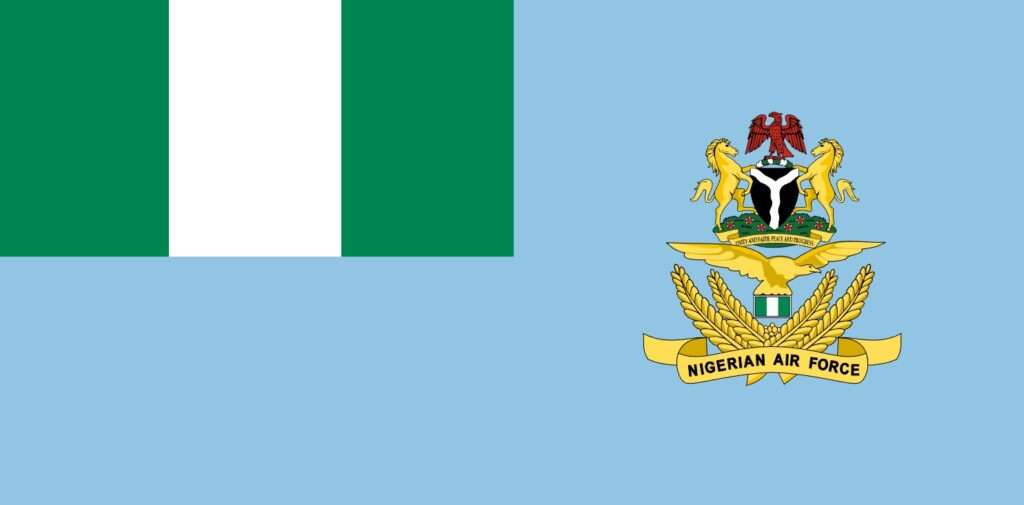
Ensign legislature
Section b of the 1968 Act confirms the red ensign. The 1968 law, which states that this ensign is “for ships other than those owned by any of the Governments of Nigeria, the flag shall have a red ground with the national flag filling the top left-hand corner and quarter of the hoist, and be known as the red ensign, and unless regulations made under this Act otherwise prescribe, a ship affected by this subsection shall display the ensign”, addresses the question of whether this is also a merchant flag in addition to being a civil ensign.
Therefore, it is not made clear that this ensign is used for commerce ships here, but they are
permitted to do so. In accordance with the ‘Merchant Shipping Act of 2007’.
Penalty for carrying improper color:
(1) If there are hoisted on board-
(a) any Nigerian ship any colors or pendant usually worn by ships of the naval forces of Nigeria
or the distinctive national colors of any country except the national colors as the ship is, for the
time being, allowed to wear in accordance with any written law or any other lawful authority.
This means that merchant ships cannot fly the white ensign, but it does not specify which
ensign should be flown in its place. Only ‘appropriate colors’ are required to be worn by ships,
according to the 2007 law for merchant ships.
According to the 1968 Act, the Nigerian Navy’s white tricolor flag is used at the canton of the
ensign as a temporary measure until ‘’the Minister of Defense may prescribe the flag to be
flown by vessels of the Nigerian Navy or of the Naval Reserve’’.
Nigeria: One Nation, Many Flags
Many people have commented that the recent development of flags and anthems by various state governments in Nigeria are an indication of secession. The most recent example of this new deed is Bayelsa, the home state of President Goodluck Jonathan. According to reports, it has written its own anthem and flag.
Bayelsa is one of the states in the South-South region of Nigeria, located in the core of the Niger Delta region. Bayelsa State was created in 1996 and was carved out from Rivers State, making it one of the newest states in the federation.

Nigeria Project observers find this development unsettling and believe that states shouldn’t be allowed to establish unique identities that could portend collapse. However, adopting the identities of distinct states is not entirely new in Nigeria and is not in and of itself an issue. Each area in pre-military Nigeria had its unique symbols, which was not an issue at the time. Each state has its own motto and flag, even in the United States, where we adopted our presidential system of governance. However, when it comes to national issues, US citizens have a strong sense of patriotism.
About Nigeria
In West Africa, there is a federal republic called Nigeria. The country’s borders with Chad in the northeast, Benin in the west, Niger in the north, and Cameroon in the east. The country has a population of more than 200 million people, with a population density of 923,768 people per square kilometer.
The official language of Nigeria is English, and the Naira serves as its unit of currency. Nigeria is
a federal presidential republic. Nigeria has a two-letter Nigeria code, which is NG, a three-letter
Nigeria code, which is NGA, and a five-digit Nigeria code, which is 566. The dialing code is +234 and Nigeria uses UTC, or standard time, which is UTC +1 hours.
Being a federal republic, Nigeria comprises a total of 36 states and 1 Federal Capital Territory.
By: Jasleen Kaur
